The art of the Australian breakfast
Sign up now: Weekly recommendations for the best eats in town
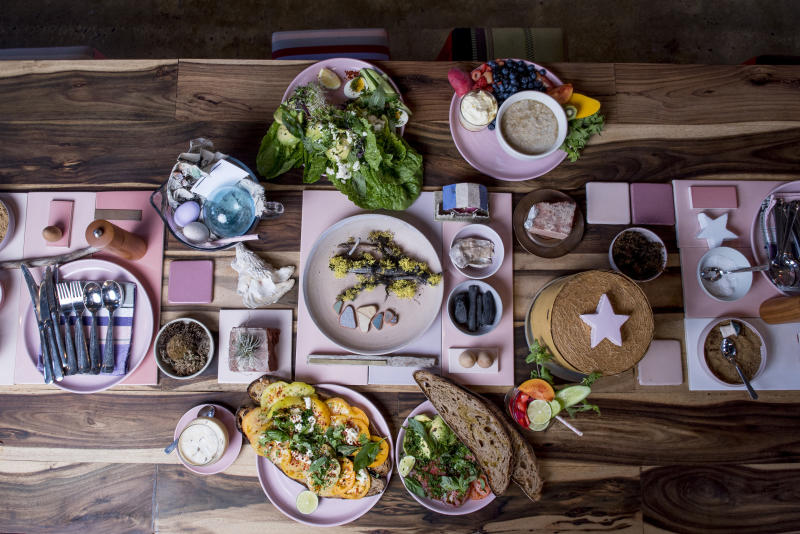
An assortment of dishes at Carthage Must Be Destroyed, a cafe in Brooklyn. Young Australian expats have transplanted their bright, Instagrammable cooking and mellow lifestyle by opening cafes in New York City.
PHOTO: NYTIMES
Julia Moskin
Follow topic:
(NYTIMES) - The typical New York breakfast - something fast and greasy, brown and starchy - has never caught up to the food we eat the rest of the day. It's not easy to find something appetizing, much less beautiful, in the morning rush.
That's probably why, along with the advents of Instagram and the gig economy, New Yorkers have taken to the modern breakfasts served at the city's rapidly multiplying Australian cafes. This cooking style features bright mash-ups of foods that are healthy, natural and luxurious all at once, and that even the most hardened bacon-egg-and-cheese lover may not be able to resist.
That's probably why, along with the advents of Instagram and the gig economy, New Yorkers have taken to the modern breakfasts served at the city's rapidly multiplying Australian cafes. This cooking style features bright mash-ups of foods that are healthy, natural and luxurious all at once, and that even the most hardened bacon-egg-and-cheese lover may not be able to resist.
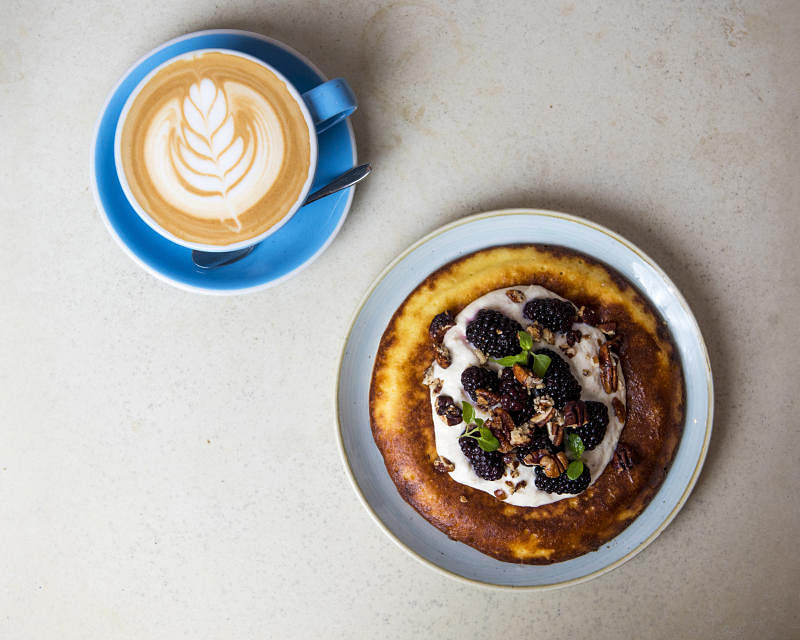
Cafes like Two Hands, Ruby's, Flinders Lane, Banter and Five Leaves serve plates of organic porridge with raw honey and grass-fed cream, free-range poached eggs with local bacon and roasted broccoli, and all manner of avocado toast, garnished with everything from pickled onions and hoja santa to sesame seeds and shiso leaves. Even the proliferating chain Bluestone Lane offers not only avocado toast but an entire "toast bar," with sophisticated spreads like almond butter and citrus curd.
Dozens of these Australian-style cafes have opened in the city in the last decade, serving their simple and sophisticated version of breakfast all day long, in a British-Mediterranean-Asian vernacular that echoes the food of chefs and writers like Neil Perry, Yotam Ottolenghi and Donna Hay.
This is not a coincidence. A trade agreement between Australia and the United States, which included a flexible new work visa specifically for Australians, was signed in 2005, after the country's strong (and still controversial) military support for U.S. operations in Afghanistan and Iraq. Several thousand Australians, most of them young adults, have arrived every year since 2005. Sometimes it seems that all of them have just opened cafes, or are waiting tables in one.
This is especially true in New York's trend-incubating neighborhoods like Nolita, Williamsburg and Greenpoint, where these cafes have clustered, and where many local residents don't work day jobs, or work remotely. As in Australia, where the tech sector and gig economies are also growing, this frees up time to breakfast on kale polenta with a fried egg and linger over pancakes and porridge - and to post a photo of the latte art atop your perfect flat white (an Australian espresso-and-steamed-milk drink that is neither a cappuccino nor a latte).
"Breakfast in Australia can last until it's time for a beer, if you work it right," said Nicola Palmer, a graphic designer from Canberra who lives in Williamsburg.
Avocado toast is the signature dish of this style, and many food historians believe that Bills in Sydney, which opened in 1993, was the first restaurant to serve it. (It is impossible to credit Bill Granger, the founder, with "inventing" avocado toast, as everyone knows someone who insists she invented it first, usually during a college vegetarian phase.) Well before Bills, a flourishing coffee and cafe culture was already emanating from Melbourne, seen by natives as a cooler, more cerebral and creative city than sunny, international, glamour-seeking Sydney.
This is not a coincidence. A trade agreement between Australia and the United States, which included a flexible new work visa specifically for Australians, was signed in 2005, after the country's strong (and still controversial) military support for U.S. operations in Afghanistan and Iraq. Several thousand Australians, most of them young adults, have arrived every year since 2005. Sometimes it seems that all of them have just opened cafes, or are waiting tables in one.
This is especially true in New York's trend-incubating neighborhoods like Nolita, Williamsburg and Greenpoint, where these cafes have clustered, and where many local residents don't work day jobs, or work remotely. As in Australia, where the tech sector and gig economies are also growing, this frees up time to breakfast on kale polenta with a fried egg and linger over pancakes and porridge - and to post a photo of the latte art atop your perfect flat white (an Australian espresso-and-steamed-milk drink that is neither a cappuccino nor a latte).
"Breakfast in Australia can last until it's time for a beer, if you work it right," said Nicola Palmer, a graphic designer from Canberra who lives in Williamsburg.
Avocado toast is the signature dish of this style, and many food historians believe that Bills in Sydney, which opened in 1993, was the first restaurant to serve it. (It is impossible to credit Bill Granger, the founder, with "inventing" avocado toast, as everyone knows someone who insists she invented it first, usually during a college vegetarian phase.) Well before Bills, a flourishing coffee and cafe culture was already emanating from Melbourne, seen by natives as a cooler, more cerebral and creative city than sunny, international, glamour-seeking Sydney.
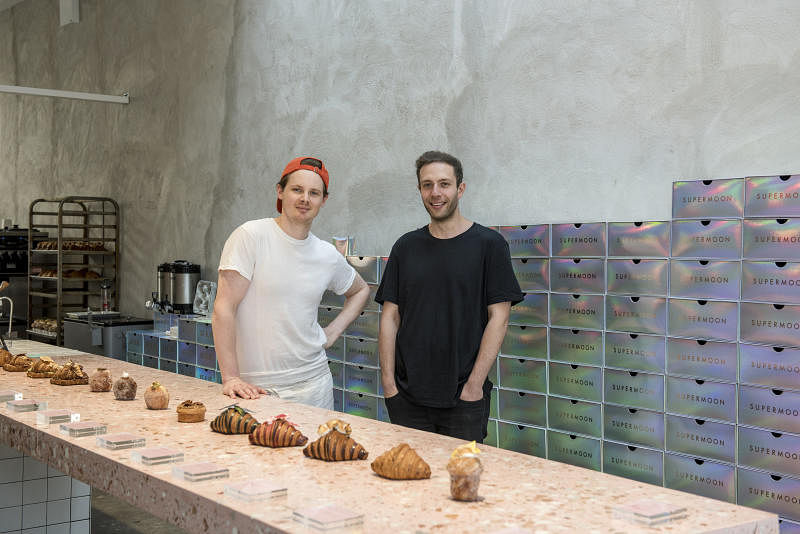
Ry Stephen, a pastry chef, perfected his extraordinary croissants in Melbourne before moving to Paris, San Francisco and then New York to open Supermoon Bakehouse on the Lower East Side last year. The bakery serves mainly breakfast pastries - croissants, doughnuts and muffins - but in fascinating variations like blueberry-rosemary, peppermint crisp, and lemon-coconut, often dyed bright colors and decorated with delicately crafted toppings.

"Breakfast is clearly the most beautiful meal," said Aron Tzimas, Stephen's business partner, who designed the bakery's stunning interior and its chic packaging.
Granger was a well-traveled art student with a penchant for Japanese design and no culinary experience when he opened the first Bills in Sydney in 1993. "I knew that I wanted the food to look a certain way, and that I wanted the place to feel bright and beachy," he said. "I didn't really cook much except scrambled eggs." But those eggs (usually called "folded" eggs, they are a kind of compromise between an omelet and scrambled eggs), ricotta pancakes with honey butter, and avocado toast with lime and cilantro were so good, and the restaurant so generally appealing, that Bills became an improbable international destination. (In 2002, R.W. Apple of The New York Times devoted a column to its "simple food stunningly well cooked.") Granger had no intention of reinventing the image of Australian food as seen from abroad, but he did; there are now multiple Bills, in Japan, Korea and Hawaii. There isn't one in New York (yet), but the cafes we do have maintain a remarkable fidelity to that original Bills menu.
But in moving beyond, they veer off in different and interesting directions toward Thai flavors (at Dudley's, where crispy rice salad with fresh herbs is a lovely dish for breakfast with a fried egg), or global spice mixtures like dukkah and togarashi (at Hole in the Wall), or health trends like chia seeds and grain bowls (at the brand-new Charley St.).
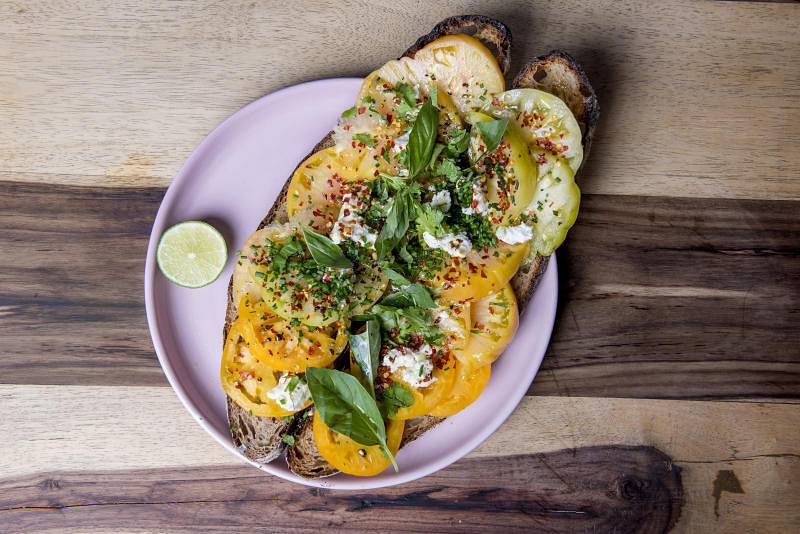
This bright picture of Australian food - packed with fresh and local produce, invitingly global in its flavors, health-conscious but not abstemious - is relatively new.
Through the 1980s and '90s, Australia's longtime reputation as a culinary backwater - British food, but worse - was transformed. From colonization, which formally began in 1788, the diet for new arrivals had been heavy with Britishisms like meat pies, sausage rolls, canned vegetables and chocolate bars.
As in the United States, the Australian food revolution meant upending a formal, Eurocentric fine-dining scene, embracing fresh and locally grown food, and incorporating immigrant food traditions. New bakeries made slow-risen sourdough and whole-grain breads. Dairies mastered Mediterranean cheeses like halloumi, feta and pecorino, familiar to Australia's large Greek and Italian immigrant communities. Talented chefs like Tetsuya Wakada, Kylie Kwong and David Thompson ushered Asian flavors into the mainstream.
And all of it led to New York City's sidewalks, where people now wait on weekends to squeeze in for $14 fried-egg sandwiches (with arugula, bacon, tomatoes and chile relish) and $16 folded eggs with peas, avocado, spinach and salsa verde.
If there is a philosophy behind this food, it is more about eating than about cooking. "I think many people today haven't really eaten for years," said Amanda Bechara, who with her husband, Daniel Goldstein, owns Carthage Must Be Destroyed, a color-filled and lofty cafe hidden in an unmarked alley in the Bushwick neighborhood in Brooklyn. "Especially people who eat in New York restaurants all the time."

Bechara is emphatically uninterested in inventing the next fish-skin chicharrón or rye-bread gelato, the kind of culinary innovations and challenges that usually drive New York chefs forward. Instead, her formidable creative energy is diverted into finding the products she wants: flavorful tomatoes, a steady supply of organic avocados and really ripe mangoes - not an easy task, even in this food-loving city. (She is also busy remotely running her popular, and very similar, Bread & Circus cafe in Sydney.) The breakfast salad at Carthage is not the discordant bowl of shredded kale, blueberries and quinoa that it may sound. Instead, it's a proper green salad, but supersized and unfurled on a warm pink plate. (Head-high stacks of those plates are the restaurant's main element of décor.) It's also enriched with a creamy-yolked boiled egg, lashings of golden olive oil, soft chunks of marinated feta and an avalanche of chives, cilantro and basil.
Like her fellow expats, Bechara serves lots of bread, meat, cheese and butter, and thinks that Americans have very peculiar ideas about what foods are healthful.
Like her fellow expats, Bechara serves lots of bread, meat, cheese and butter, and thinks that Americans have very peculiar ideas about what foods are healthful.
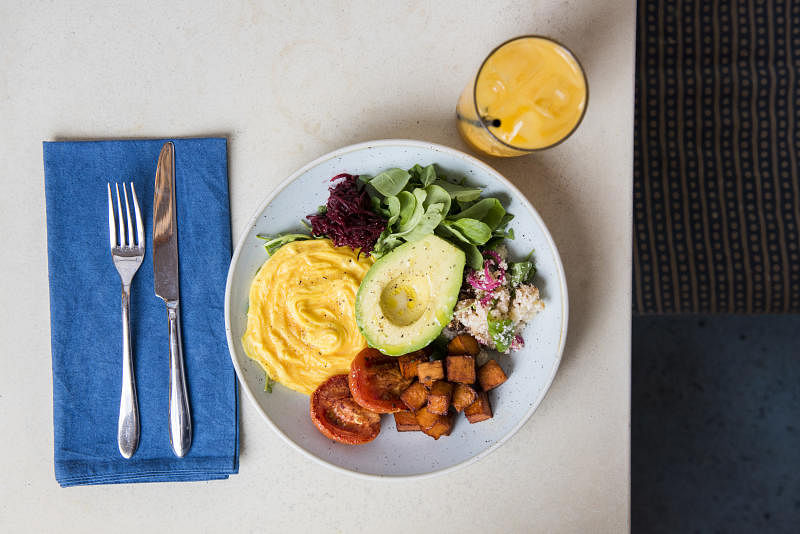
"Real food, where you can identify everything on your plate, is clearly healthy," said Henry Roberts, a Sydney native and an owner of Two Hands, which has two downtown Manhattan locations. "In Australia, even city people can have a very active, outdoor lifestyle," he said. "So we don't worry much about diets or calories or carbs. And there's no scolding." That lifestyle has gained luster with the arrival of social media, where Australia's beach culture is viewed and drooled over by the rest of the world. Gorgeous spots like Bondi Beach, Manly Beach and Byron Bay, and the glowingly fresh food eaten by the glowingly fresh people there, are constantly showing up on the Instagram and Facebook feeds of hip global travelers.
It is enough to make you wonder why people who could live there choose to live here instead. "Melbourne is a bit like San Francisco, and Sydney is like Los Angeles," said Tzimas, of Supermoon Bakehouse. "But if you want to get your work on the world stage, there's nothing like New York."
Avocado Toast
Total time: 5 minutes
INGREDIENTS
For the avocado toast
2 large slices crusty, chewy sourdough bread, preferably whole wheat
1 ripe avocado, halved, pit removed
Extra-virgin olive oil
Flaky salt and coarsely ground black pepper
Half a lemon or lime
Optional garnishes
Poached or fried eggs
Thinly sliced pickled or fresh red chilies
Thinly sliced pickled red onions
Pepitas (pumpkin seeds) or sesame seeds, or both
Herbs, such as basil, cilantro, mint or baby arugula
METHOD
1. Toast the bread to your liking. Meanwhile, use a wide spoon to remove the avocado halves from the peel, keeping them in large pieces.
2. Drizzle the hot toast lightly with olive oil and sprinkle with salt. Let cool slightly, then place one avocado half on each slice of toast. Use the back of a fork to roughly mash the avocado into the bread, keeping it as chunky as possible.
3. Sprinkle with a little more salt, and pepper if desired. Squeeze the citrus over the top and add any garnishes. Cut each piece of toast in half if they're large and serve immediately.
For the avocado toast
2 large slices crusty, chewy sourdough bread, preferably whole wheat
1 ripe avocado, halved, pit removed
Extra-virgin olive oil
Flaky salt and coarsely ground black pepper
Half a lemon or lime
Optional garnishes
Poached or fried eggs
Thinly sliced pickled or fresh red chilies
Thinly sliced pickled red onions
Pepitas (pumpkin seeds) or sesame seeds, or both
Herbs, such as basil, cilantro, mint or baby arugula
METHOD
1. Toast the bread to your liking. Meanwhile, use a wide spoon to remove the avocado halves from the peel, keeping them in large pieces.
2. Drizzle the hot toast lightly with olive oil and sprinkle with salt. Let cool slightly, then place one avocado half on each slice of toast. Use the back of a fork to roughly mash the avocado into the bread, keeping it as chunky as possible.
3. Sprinkle with a little more salt, and pepper if desired. Squeeze the citrus over the top and add any garnishes. Cut each piece of toast in half if they're large and serve immediately.
Serves two
Breakfast Salad
Total time: 30 minutes, plus 12 hours of marinating (optional)
INGREDIENTS
For the marinated feta (see note)
About 115g feta cheese (not crumbled), preferably a creamy type made with some sheep's milk
1 garlic clove, smashed and peeled
1 dozen black or mixed peppercorns, coarsely cracked
Extra-virgin olive oil, preferably cold-pressed
For the salad
2 large hearts romaine lettuce, outer leaves removed
2 lemons, halved
1 avocado, halved, pit removed
About 55g sprouts, such as alfalfa, clover or rainbow
2 mini or Kirby cucumbers, cut into spears or sliced
2 or 3 hard-boiled eggs, at room temperature, peeled and halved
Flaky salt and coarsely ground black pepper
Extra-virgin olive oil
2 handfuls soft herbs, such as basil, chives, cilantro and mint
Sourdough toast, for serving (optional)
METHOD
1. A day before serving, marinate the cheese: Place feta in a small container with a tight-fitting lid. Add garlic clove and peppercorns. Pour in enough olive oil to just cover the cheese. Cover and refrigerate overnight.
2. Wash and crisp the lettuce: Fill a deep bowl with very cold water, hold the lettuce heart by the stem, dip it in and swish it gently to loosen any dirt. Lift out and let drain upside down. Repeat with the other heart. Cut off the white stem ends and gently unfurl each romaine heart onto a large plate. Use your fingers to fluff and separate the leaves, but try to keep the natural formation intact.
3. Squeeze half a lemon over each lettuce heart. Use a spoon to scoop chunks of avocado on top. Place tufts of sprouts among the romaine leaves. Place cucumber pieces and egg halves near the base of the lettuce. Add about 6 chunks of cheese.
4. Liberally sprinkle the plate with flaky salt and black pepper, then splash on plenty of olive oil, making sure to hit the egg, cheese and avocado. (You can use the oil used to marinate the feta, if you like.) Tuck the herb leaves in among the lettuce leaves or just sprinkle them over the top. Place the remaining lemon halves near the egg halves.
5. Serve with warm toast if you like. At the table, squeeze lemon over the salad and eat with a knife and fork, or with your hands.
For the marinated feta (see note)
About 115g feta cheese (not crumbled), preferably a creamy type made with some sheep's milk
1 garlic clove, smashed and peeled
1 dozen black or mixed peppercorns, coarsely cracked
Extra-virgin olive oil, preferably cold-pressed
For the salad
2 large hearts romaine lettuce, outer leaves removed
2 lemons, halved
1 avocado, halved, pit removed
About 55g sprouts, such as alfalfa, clover or rainbow
2 mini or Kirby cucumbers, cut into spears or sliced
2 or 3 hard-boiled eggs, at room temperature, peeled and halved
Flaky salt and coarsely ground black pepper
Extra-virgin olive oil
2 handfuls soft herbs, such as basil, chives, cilantro and mint
Sourdough toast, for serving (optional)
METHOD
1. A day before serving, marinate the cheese: Place feta in a small container with a tight-fitting lid. Add garlic clove and peppercorns. Pour in enough olive oil to just cover the cheese. Cover and refrigerate overnight.
2. Wash and crisp the lettuce: Fill a deep bowl with very cold water, hold the lettuce heart by the stem, dip it in and swish it gently to loosen any dirt. Lift out and let drain upside down. Repeat with the other heart. Cut off the white stem ends and gently unfurl each romaine heart onto a large plate. Use your fingers to fluff and separate the leaves, but try to keep the natural formation intact.
3. Squeeze half a lemon over each lettuce heart. Use a spoon to scoop chunks of avocado on top. Place tufts of sprouts among the romaine leaves. Place cucumber pieces and egg halves near the base of the lettuce. Add about 6 chunks of cheese.
4. Liberally sprinkle the plate with flaky salt and black pepper, then splash on plenty of olive oil, making sure to hit the egg, cheese and avocado. (You can use the oil used to marinate the feta, if you like.) Tuck the herb leaves in among the lettuce leaves or just sprinkle them over the top. Place the remaining lemon halves near the egg halves.
5. Serve with warm toast if you like. At the table, squeeze lemon over the salad and eat with a knife and fork, or with your hands.
Serves two
* Note: If time is tight, plain feta can be used instead of marinating it first.
* Note: If time is tight, plain feta can be used instead of marinating it first.

